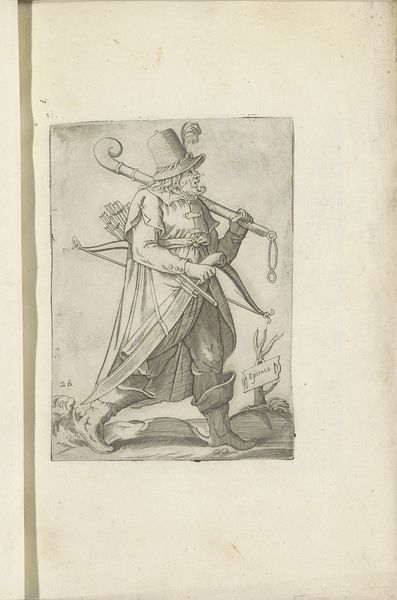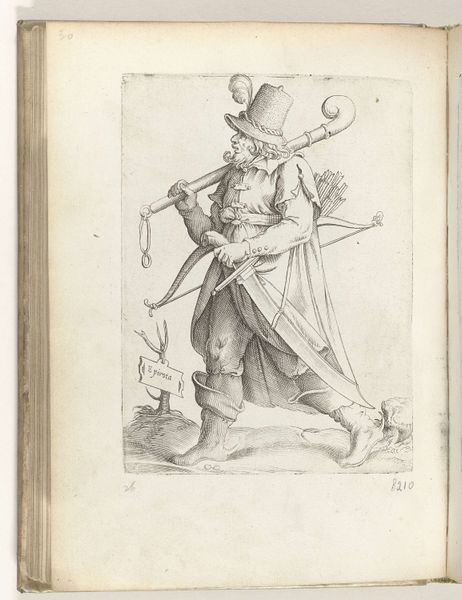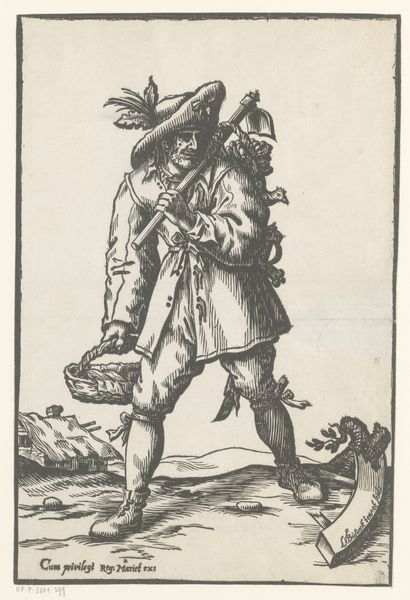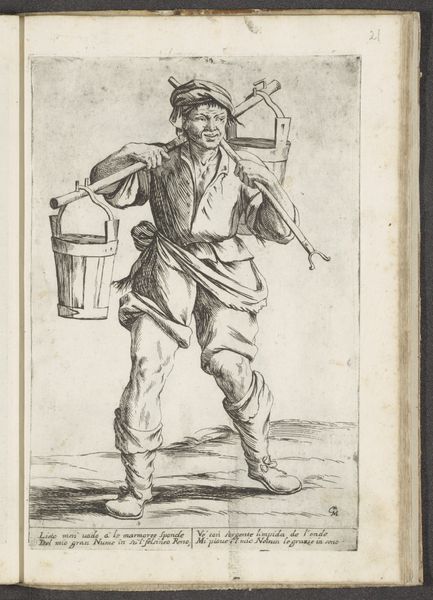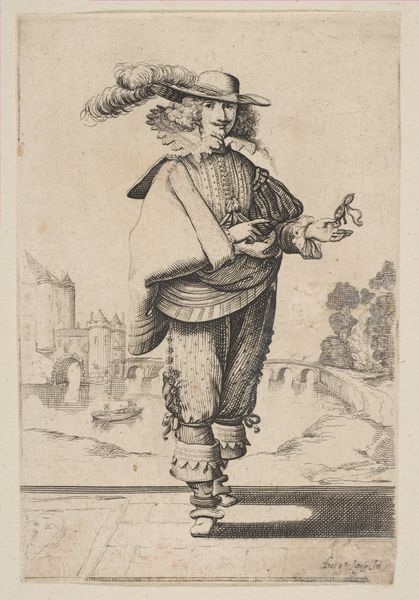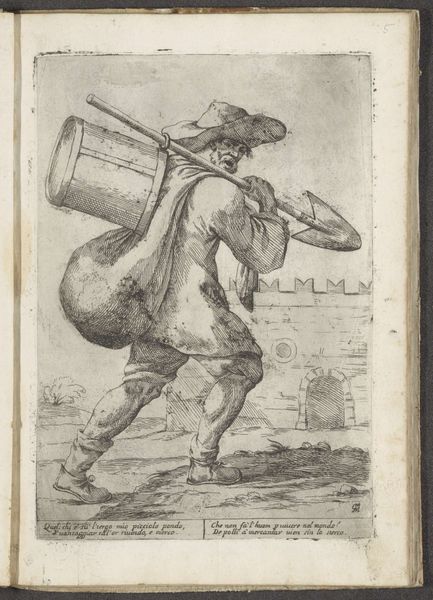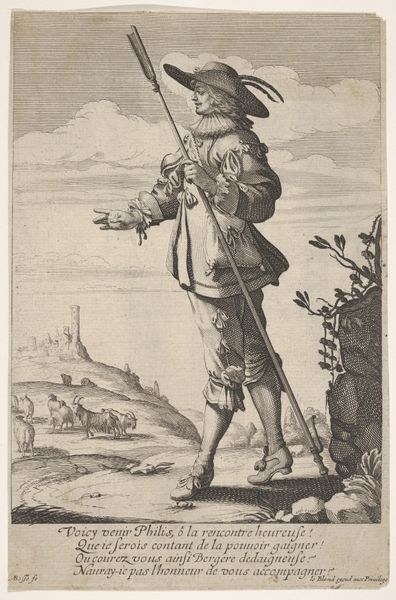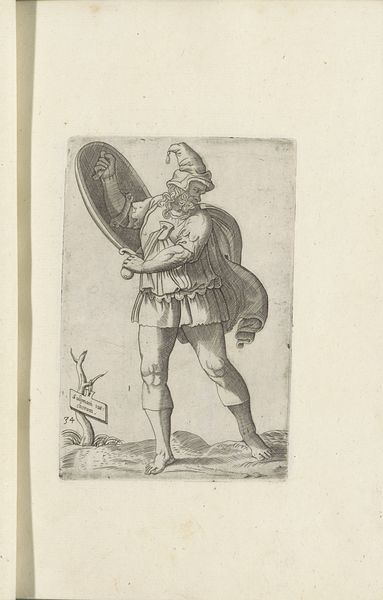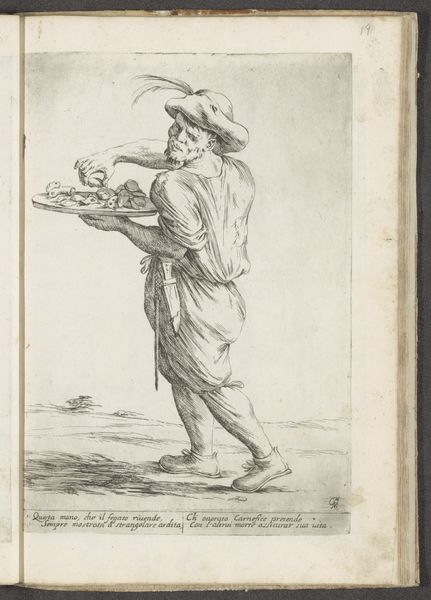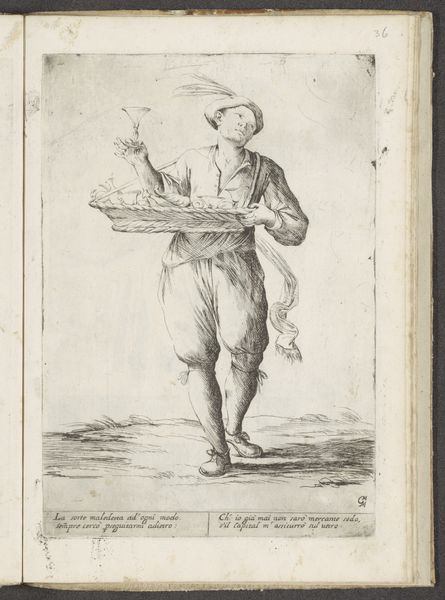
print, engraving
#
narrative-art
#
baroque
# print
#
caricature
#
genre-painting
#
engraving
Dimensions: height 280 mm, width 194 mm
Copyright: Rijks Museum: Open Domain
Curator: Here we have "Kwakzalver" an engraving made around 1660 by Giuseppe Maria Mitelli, currently held at the Rijksmuseum. Editor: My initial impression is one of humor, though it carries a sharp edge. The central figure, so meticulously rendered, practically leaps off the page with his exaggerated features. The line work, though precise, also conveys a certain chaotic energy. Curator: Indeed. Mitelli positions this quack doctor—the "Kwakzalver"—as a spectacle. This print belongs to a larger tradition of visual satire, offering social commentary during a period of significant socio-political shifts across Europe. Notice how the artist employs the print medium, traditionally used for disseminating knowledge, to question the very notion of expertise. Editor: The snake he brandishes immediately suggests deceit and manipulation—a very ancient symbol for trickery and falsehoods that carries a clear negative connotation. But it is more than just the snake. Take his spectacles for instance: huge, bulbous magnifying glasses meant to convey learnedness but that ironically end up comically distorting his features. The detail suggests he’s not as smart as he wants us to believe he is. Curator: Absolutely. The work becomes a potent critique of charlatanism and perhaps points to the broader anxieties surrounding authority in the 17th century. These satirical prints offered a relatively accessible way to challenge societal norms and those who benefited from them, even if that form of critique only stayed inside the printed work. Editor: I think its continuing relevance lies in how vividly it captures our perennial unease with figures of false authority. We instantly recognize the "Kwakzalver," even today. Mitelli tapped into something timeless about human gullibility and the seductive allure of those who claim to have all the answers. Curator: It's a stark reminder, even centuries later, to maintain a healthy dose of skepticism. Mitelli's commentary on medical quackery serves to warn against the unquestioning acceptance of so called experts and underscores the importance of public knowledge and critical thinking. Editor: It leaves one reflecting on how we visually depict skepticism itself—a question of image, truth, and power.
Comments
No comments
Be the first to comment and join the conversation on the ultimate creative platform.


